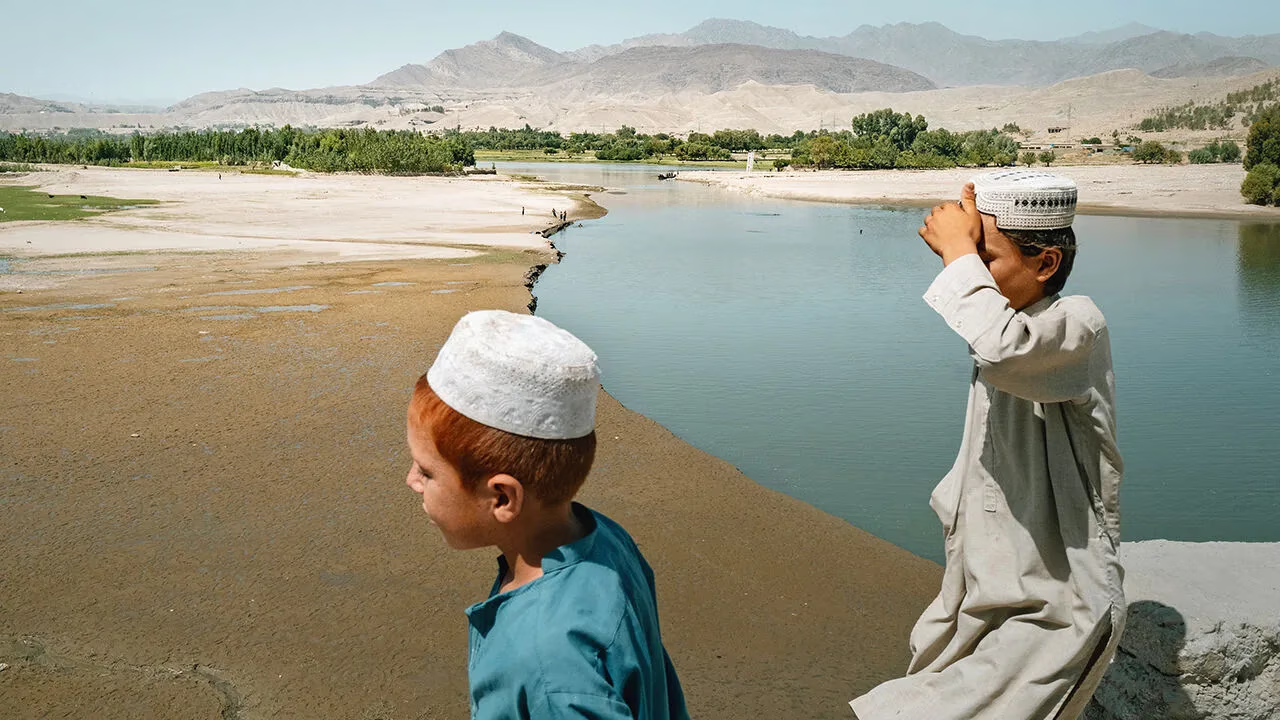Iran is facing an acute water emergency. Reservoirs supplying the country’s largest cities are filled to less than 10%, and around Tehran the level does not exceed 5%; several reservoirs have already dried up or are close to doing so. President Masoud Pezeshkian has warned that without rainfall the capital may have to be evacuated by early winter. It remains unclear where roughly 10 million residents of the metropolis could be relocated, given that many regions are in equally dire condition. For example, the reservoirs supplying Mashhad, Iran’s second-largest city, are filled to just 3% or even less.
In the west of the country, in the Zagros Mountains, recent weeks have brought some rain, and Mount Tochal near Tehran has seen snowfall. But overall precipitation stands at roughly one-tenth of the climatic norm—Iran is experiencing its driest autumn in at least fifty years.

The Amir Kabir Dam near Tehran.
On November 16, Iranian authorities announced the start of cloud-seeding operations aimed at artificially stimulating rainfall over the basin of Lake Urmia in the country’s northwest. Iran’s largest lake has been shrinking rapidly: a significant part of its surface area has already turned into salt flats.

The receding waters of Lake Urmia.
The core problem is that cloud seeding works only when there is enough moisture: the dispersed agents aid condensation and the formation of raindrops, but the air across Iran is now too dry almost everywhere, including in the mountain regions where clouds would normally form.
Tehran and other major cities are operating on water-rationing schedules, and residents are lining up at tanker trucks. State television is airing footage of collective prayers for rain.
The water shortage has already reduced output at hydroelectric plants. Industry is experiencing severe disruptions: water plays a critical role in cooling and other essential processes. Agricultural acreage has shrunk significantly, a development that is likely to push food prices even higher.
The broader economic situation is already strained. Food prices are rising by 3–4% each month. As early as September, parliamentary speaker Mohammad Bagher Ghalibaf noted that many Iranians can no longer afford chicken: a kilogram of fillet costs nearly $3.50, while the average monthly income is around $200. Food, including potatoes, is now being sold on installment plans.
The authorities are discussing water imports and the possibility of deploying desalination technologies—drawing on examples such as the neighboring UAE, which secures a large share of its supply this way. But because of sanctions and strained relations with many countries, Iran can count on only very limited international support.

A rain-prayer ceremony at the Imamzadeh Saleh mosque in Tehran. November 14, 2025.
The crisis stems from a mix of natural constraints and human decisions. The Iranian Plateau has no major rivers, and the mountain ranges encircling it block the inflow of moist air from the seas, leaving the region chronically short of precipitation. Recent years have been exceptionally hot and dry, further destabilizing an already fragile equilibrium.
The country’s agriculture relies almost entirely on artificial irrigation, which consumes up to 90% of all available freshwater. The state has long encouraged the cultivation of water-intensive crops—such as rice, sugar beet, and pistachios—because their export brought in much-needed foreign currency under sanctions. But irrigation was typically done in the most rudimentary and inefficient manner: fields were simply flooded, causing large volumes of water to evaporate or seep into the ground.

South Asia Shares the Same Rivers
What Happens to a Region Where Each Country Manages the Common Water in Its Own Way

Kabul Risks Running Out of Water
Wells Are Drying Up, the Population Is Growing, and Outside Help Is Scarce
Across the country, thousands of wells were drilled with virtually no oversight. The large-scale depletion of groundwater reserves has not only drained them but also caused land subsidence, putting even Persepolis—one of Iran’s most important archaeological sites—at risk. In the past, authorities seeking to boost agricultural output routinely legalized unlicensed wells instead of limiting their numbers.
Further damage came from extensive dam construction, including for hydropower—projects promoted as symbols of progress. These structures disrupted the natural flow of the country’s few, already water-scarce rivers; it is for this reason that Lake Urmia began shrinking rapidly long before the current drought, which merely pushed the process to an extreme. The new dams created numerous reservoirs with large open surfaces, from which water evaporated at a high rate.
Water-use monitoring in the country remains highly inefficient, and tariffs—especially for the agricultural sector—are heavily subsidized. This has only reinforced the tendency to overuse already scarce resources.
On November 21, President Masoud Pezeshkian announced that the decision to relocate the capital has effectively been made. The plan is to build a new administrative center in the Makran region in the country’s southeast—a sandy desert that remains dry and scorching even by Iranian standards. Its proximity to the sea, however, makes it possible to supply the future city with desalinated water.
